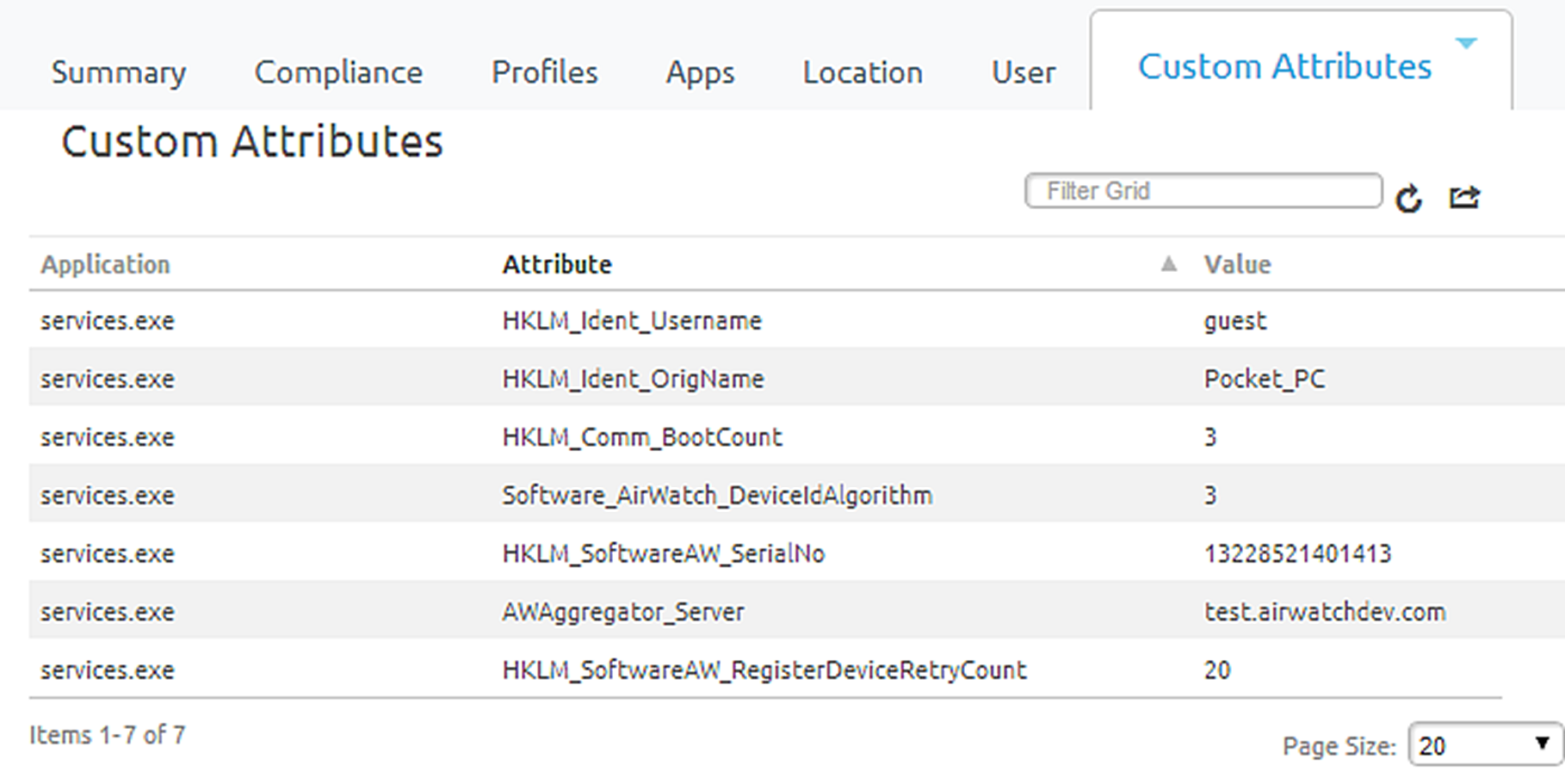XML provisioning can collect custom attributes based on your Win7 device details. You can use custom attributes to unlock product provisioning's more advanced functionality.
Procedure
Results
Upon receiving the XML file, the Workspace ONE Intelligent Hub for Windows 7 creates a custom attributes output file. During the next check-in with Workspace ONE ™ UEM, the Workspace ONE Intelligent Hub sends the output file to the UEM console.
Once the XML file installs, the custom attributes requested in the file exported to the UEM console. These values display in the console in the Device Details page under Custom Attributes. The Device Details page enables you to view the name of the attribute and the values returned from each device. These values can be used to create product assignment rules using the Custom Rules system.
Upon enrollment, the Workspace ONE Intelligent Hub for PC automatically generates the Device Model and Serial Number attributes.

Example: Syncing Registry Settings
To synchronize the registry settings on a Windows 7 device with the console, which is likely the most common use of custom attributes for Windows 7 devices, you must create a custom XML file.
This sample XML file pulls information from the registry on a device:
<xml version="1.0"> <wap-provisioningdoc name="desiredDocName /V_1"> <characteristic type="com.windowspc.getregistryinfo.managed"> <reg_value value_name="KeyName(i.e. CommonFilesDir)" key_name="RegistryPath(i.e.Software\Wow6432Node\Microsoft\Windows\ CurrentVersion)"custom_attribute_name="AttributeName"/> <reg_value value_name="Keyname ..." key_name="Path\...." custom_attribute_name="AttributeName2"/> </characteristic> </wap-provisioningdoc>
It must be in the previous format for the XML file to get correctly parsed and the registry settings to be outputted to a key value pair that can be exported back to the UEM console.
In this example, the registry key path is “HKEY_LOCAL_MACHINE\Ident” for two of the values and within that key path it is reading the values of “Username” and “OrigName”. The ‘custom_attribute_name’ parameter is simply the name of the custom attribute that displays in the console and corresponds to the value read from the device.
What to do next
You can also view existing custom attributes for all devices at a particular organization group and manually create custom attributes directly in the console. Navigate to . Any custom attribute created in this manner automatically associates with a device and its respective custom attribute value that transmits successfully to the console.